#SingnificanceOf #PitruPaksh, What Food To Be Offered, Is that #Prayers must be performed in this period Etc. Queries are answered below.
Question
What is the significance of Pitr Paksha?
Answer:- Pitr (ancestors) Paksha (phase of the moon) or simply “The auspicious period for remembering those who have passed on” is very important and significant in the Hindu culture. The Sanskrit word Pitr embraces God in all His aspects, the earliest sages, and our immediate ancestors to the third generation, and all our departed friends and relatives. Pitr Paksha set aside as a Memorial and thanksgiving to the departed souls, who, when on this Earth, made some contribution to make it a better place. We acknowledge our indebtedness to our ancestors in this period. It’s an observance accompanied by intense bhakti (devotion) to the Supreme Lord.
Question
Is there any proof that Pitr Paksa prayers must be performed in this period?
Answer:- There is much proof in Vedic sastras but we shall quote just two. In the Srimad Bhagavatam 7.14.19 Srila Vyasadeva said to Narada Muni. “During the dark fortnight of the month Ashwina [September -October] one should offer oblations to the ancestors as far as they can afford it”. 2ndly “A brahmana who is sufficiently rich must offer oblations to the forefathers during the dark-moon fortnight in the latter part of the month of Bhadra. Similarly, he should offer oblations to the relatives of the forefathers during the Mahalaya ceremonies in the month of Ashvina. (Srila A.C. Bhaktivedanta Swami Prabhupada. Srimad Bhagavatam 7:14:19.)
Question
why during this period no prayers, like Katha and Jhunda, weddings, moving into a new house etc are NOT performed?
Answer:- This is a period set-aside for our ancestors…a thanksgiving period. In this period one should not consume any meat, alcohol and other intoxicants. One must offer food and tarpana (water oblations) to ones’ ancestors daily during the day light hours. One should not perform weddings, Katha and Jhunda, Sacred thread ceremonies, one cannot move into a new house and sign important papers, start a new job, start a new business venture and so forth. BUT one should perform charity, deity worship, daily Sandhya (offering of Surya jal, etc), lighting of your Lakshmi Lamp, japa, study of scriptures, fasting like Ekadashi, Agni Hotra (a 10 second havan performed at the junction of sunrise and sunset) and so forth.
Question
Why does one perform tarpana (water oblations) in this period to our ancestors?
Answer:- The followers of Sanathan Dharma (Hindus) express their gratitude and devotion by offering oblations of water (Tarpana) in memory of their ancestors. Humans have three types of debts when they are born viz. debt to Lord Krsna and the devas, debt to the Rishis and finally debt to ones departed ancestors. ‘Trup’ means satisfying others. The word ‘Tarpana’ has been formed from the root word ‘Trup’. Offering water to Lord Krsna, the devas, the rishis and one’s ancestors one satisfies them immensely and through it is called Tarpana. The objective of performing Tarpana is that Lord Krsna, the devas, the rishis and one’s ancestors whose names are pronounced while performing Tarpana, should bestow happiness on the performer.
Question
What type of fast does one perform during this period, what should I abstained from?
Answer:- One should abstain from MEAT. It’s rather strange for me to say this because all humans are supposed to be vegetarian. One can have salt in this period.
Question
Currently I live in a flat so it is not possible for me to offer the water or any food outside. Is there any other way that I can observe this fast?
Answer:- Now this is time, place and circumstances, if you live in a flat and if you have a balcony then you can offer the food on the balcony. If you don’t have a balcony then offer the food and tarpana in one corner of the apartment facing the south Direction. You must offer food to your ancestors for entire period. On the last day a havan is performed (optional) and food offered into the fire.
Question
What is the main food to be offered? (Some of us cook lots and lots of food)
Answer:- what ever you cook (of course only vegetarian food) you can offer. There is no special food that is cooked but do cook what your ancestors liked excluding the meat etc. Please don’t cook like 10 curries cook a few curries but cook them well and with love and devotion.
Question
Why we use Til (sesame seeds), Jaw/Jau (Barley seeds) and Kush grass (a.k.a Darbha/koos/kusha/darbhe)?
Answer:- This is stated in the Garuda Purana Preta Khanda chapter 29 verses 15-17 “Sesame seeds originate from My sweat and hence holy. Asuras, Danavas and Daityas flee from the place where gingelly (Til/Sesame) seeds are kept. Gingelly seeds, white, black and brown destroy sins committed by the body. One gingelly seed offered in the holy rite is on a par with a gift of a drona (basin) measure of golden gingelly seeds. Gingelly seeds offered in tarpana and homa have an everlasting benefit.”
Verses 18-19 “Darbha (kush) grass is born of My hair and the gingelly seeds originate from My sweat, not otherwise.
Verses 20 “Brahma is stationed at the root of the Darbha grass. Keshava is stationed in the middle and know that Shankara is stationed at the tip of the Darbha grass. Thus, the three Deities are stationed in the Darbha grass.”
Verse 121 “Performing all rites with concentrated mind he should give water, rice and barley”.
Ch15 verse 64 “Barley-meal, boiled rice, fruits, etc one should partake”
Question
Can we offer food in the fire/havan kund?
Answer:- Yes in the Srimad Bhagavatam 3.6.30 the great Rishi Maitreya says “Agni-dev is the mouth of the Lord and if food is offered into the fire then the Lord consumes the food first and then that food becomes prasadam, which serves as an antiseptic to ward off the difficulties of this age (Kali Yuga)”. Please remember that all the Devi’s and Deva’s including Lord Vishnu eats via the mouth of Lord Agni. The sacrifices made to Agni-dev go to the devas because Agni-dev is a messenger to and from the other devas.
Question
Is it true that Lord Raam and Mother Sita performed Shraddha puja?
Answer:- Yes in the Garuda Purana Preta Khanda 10.31-51 this is stated: – “O Garudaji, I shall tell you how once Sita saw in the body of a brahmana the ancestors, her father-in-law, grandfather-in –law and her great-grand-father-in –law. At the behest of his father, Rama went to the forest. When he reached Pushkara, the holy center, together with his consort Sita he performed Shraddha with the ripe fruits Sita collected from the trees. When the sun reached the middle of the sky the sages who had been invited by Rama presented themselves. When Sita saw the sages she was extremely delighted. By the instructions of Rama she served them with the food. Then, all of a sudden, she got away from among the brahmanas. Covering herself behind the bushes she hid herself. Then having learnt that Sita had gone all-alone, Rama was anxious and lost in thought. He wondered why she had gone away so soon without feasting the brahmanas. He thought to himself “Maybe she felt shy, I shall search for her.” Thinking this way He himself feasted the brahmanas. When the brahmanas went away Sita returned. Then Lord Rama spoke to her: “ Why did you leave when the sages came here to the forest. Let me know the reason of your abrupt departure” then addressed by the Lord, Sita stood with her face cast down. With tears flowing down from her eyes she spoke thus to her Lord. “Lord, hear, I saw a wonder here. I saw your father, in front of the brahmanas dressed in royal costume. I saw two elderly folk donning the similar garb. On seeing your father I moved away from his presence. Attired in bark and hide, how could I serve him with food? How could I offer him food in a vessel of grass in which even slaves would not eat from? How could I, full of perspiration and dirt, go before him knowing that he had never seen me before in that miserable state? I felt shy and moved away from his presence, O Rama.” Thus, O Garuda I have told you how Sita saw the ancestors.
Question
How certain are we that the food that we offer goes to our ancestors?
Answer:- In the Garuda Purana Preta Khanda 19. 26-27 Shree Garud-ji asks: “O Lord Vishnu, things are gifted by the relatives at home in the favour of the deceased. How do they reach the deceased and who receives them?” Lord Vishnu replied “O Garuda, Varuna dev (the deva in charge of the oceans) receives those gifts and hands them over to Me. I give them to Suryadev, and from Suryadev the deceased person obtains them” so from the above verse its quite clear whatever you give on behalf or the food that you offer to you ancestors, the food/gift goes to that entity in whatever form it is in.
Question
Is there no other way to do the final once off prayer for the departed ancestors, instead of doing this Pitr Paksha prayers every year?
Answer:- NO. The Pitr prayers are performed yearly and not once off. A question I would like to ask you. Ask your doctor for a once off injection that will not make you sick again. I am quite certain there is no such medication or injection. Yearly we have to visit the doctor for constant medication so in Pitr Paksha we feed our ancestors in this time until next year. And finally we have three debts to pay viz. debt to Lord Krsna and the devas, debt to the Rishis and finally debt to ones’ departed ancestors. It’s an on going process.
Question
How do we dispose of the Pitrs Prasad after it has been offered to them?
Answer:- According to the Bhagavad Gita, “Bhuta Yajna” is an important part of charity and if placed outside (which in this case for your Pitr’s). Your Pitr’s eat this food ethereally {through smell}. After your Pitr’s eat the food it cannot be consumed by humans and thus Ants, Insects, Dogs and Birds and other creatures enjoy eating this food. Sastras call this Panch-Bali (5 types of creatures we should feed). Its extremely auspicious if any life forms (Vedic sastras state there are 8,400,000 species of life forms) consume the Prashad. But if the food still hasn’t been eaten then you can dispose of the remnants in a local river or if that is a bit difficult then dig a hole in your yard and bury the prashad.
Question
Are we allowed to visit family and friends during this time?
Answer:- YES
Question
Can a female perform shraddha puja’s (for example Pitr prayers, 6th month, 11½ month etc)?
Answer:- In the Garuda Purana Preta Khanda 8.3 Lord Vishnu replied to Shree Garud-ji: “ If families are maleless, the women should perform the obsequies”.
#PitruPaksha #Shradh #Shraadh #PitraDosha #WhenIsShradh2018 #PitruPaksha2018Dates #VedicScriptures #AuspiciousDays #ShradhVidhi #HowToPerformShradh #WhatIsPindDaan #PitruPakshaDates2018
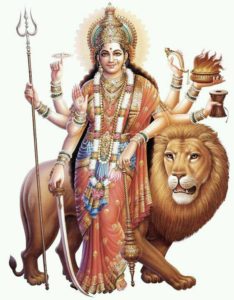 Know About Gupt Navratri (Hidden Navrati):
Know About Gupt Navratri (Hidden Navrati):
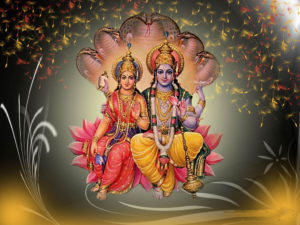

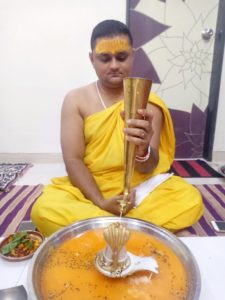
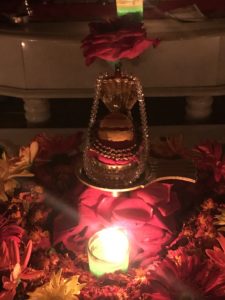
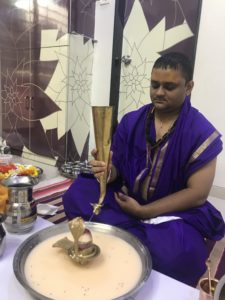

Recent Comments